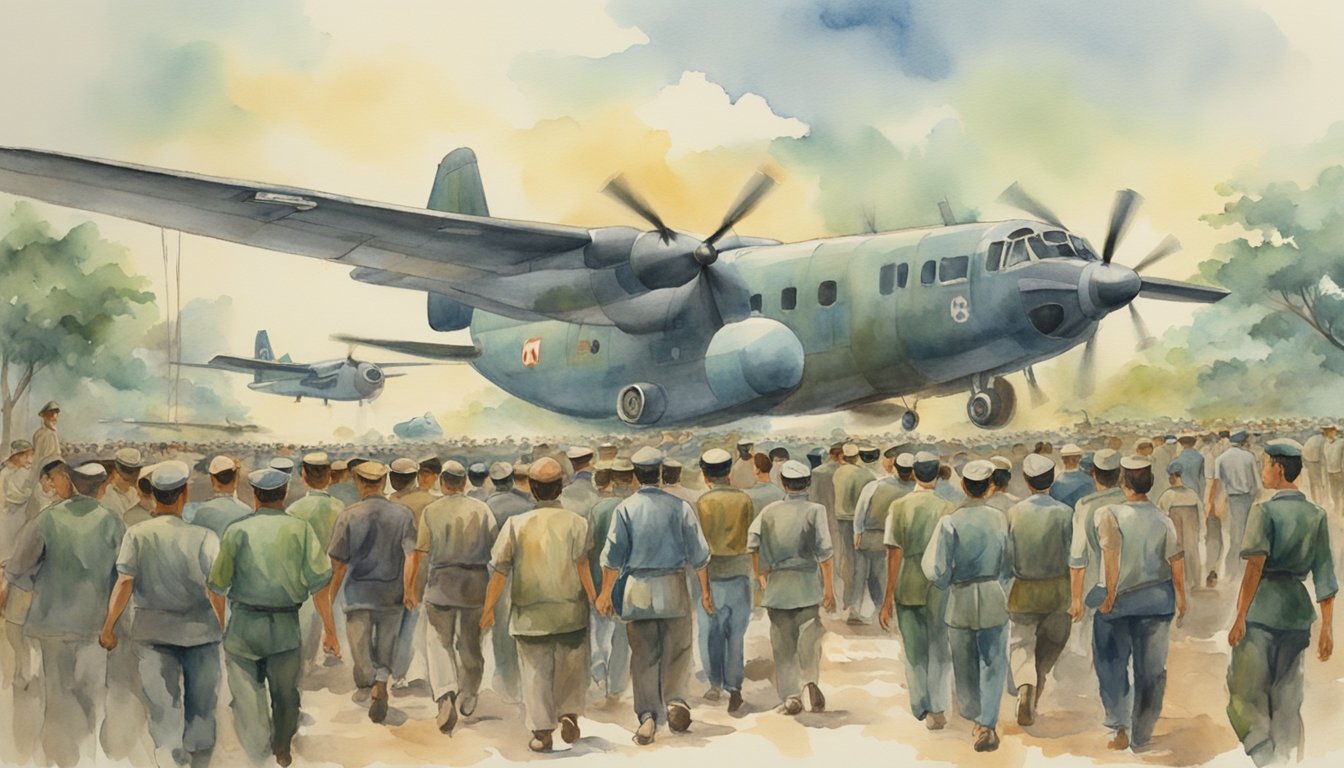The Vietnam POW Experience
The Vietnam War marked a harrowing chapter for American military personnel captured and held as prisoners of war (POWs) in North Vietnam. From extreme torture to the use of tap code for communication, the stories of resilience and survival continue to astonish and educate.
Introduction to Vietnam POWs
The Vietnam War saw over 800 U.S. prisoners of war, primarily airmen shot down during bombing campaigns against North Vietnam. These POWs faced years of detention in infamous prisons like the Hỏa Lò Prison, commonly known as the Hanoi Hilton, where conditions and treatment were in stark violation of the Geneva Convention.
Captivity in North Vietnam
While in captivity, POWs were housed in various camps throughout North Vietnam, with the most notorious being the Maison Centrale in Hanoi. They faced extreme torture and interrogation for military information. War crimes such as beatings, prolonged solitary confinement, malnutrition, and infection were unfortunately commonplace.
Daily Life of Prisoners
Daily life for the POWs was an enduring struggle to maintain sanity and health in the face of dreadful conditions. Many suffered from dysentery, and without proper medical care, their physical state deteriorated. When not enduring interrogation or confinement, they performed menial tasks and clung to thoughts of home to survive each day.
Communication and Solidarity Among POWs
Despite the risk of severe punishment, American POWs developed a method of covert communication called the tap code, a simple way to send messages by tapping on the prison walls. This ingenuity fostered a sense of solidarity and connection that was crucial for morale and psychological support.
Escape Attempts and Punishments
Escape attempts from POW camps were rare and often met with harsh repercussions, such as even more brutal beatings or execution. The fear of such penalties made many prisoners contemplate escape but few ever attempted it, knowing the high risk not only to themselves but to fellow POWs who would face collective punishment.
The unwavering spirit shown by these prisoners tells a story of human resilience. Their experiences during and after their captivity remain a crucial narrative in the annals of military history.
Repatriation and Aftermath

The return of American prisoners of war (POWs) from Vietnam and their subsequent reintegration into society marked a critical period of transition and healing, both for the individuals involved and the nation as a whole.
Operation Homecoming
During Operation Homecoming, from February to April 1973, North Vietnam returned 591 American military personnel. Among these were figures like Navy pilot John McCain and Air Force colonel James Stockdale, who endured years of captivity. This operation followed the Paris Peace Accords and was a direct result of diplomatic efforts by figures such as Henry Kissinger.
Adjusting to Freedom
Upon their return, veterans faced the challenge of adjusting to freedom. Many POWs were flown to Travis Air Force Base in California, where they had to readapt to life outside of captivity. Families had changed during the interim, often marked by events like the “Dear John letter,” suffering marriages, and for some, like Air Force pilot Robert Shumaker, the jubilant welcoming arms of children they never met.
Healing and Reconciliation
The healing and reconciliation process was long and arduous for many returning POWs. Some sought solace through community and support groups. An example is the story of Army Veteran David Harker who, after spending more than five years as a prisoner of war, found peace through daily routines and reunions with fellow veterans.
Legacy and Cultural Impact
The legacy and cultural impact of these POWs is profound. Books such as “Five Years to Freedom” by James N. Rowe, and Pulitzer Prize-winning photographs, like that of 1st Lt. Robert L. Stirm being greeted by his family, captured hearts and helped society gain a deeper understanding of the POW experience. Commemorations and institutions like the National POW/MIA Recognition Day continue to remind us of the sacrifices made by service members and their families. Their stories have been shared in museums, documentaries, and educational programs, ensuring that future generations recognize their resilience and bravery. Even organizations dedicated to civic engagement and leadership, such as those preserving girls scout history, have acknowledged the importance of honoring veterans and POWs. This enduring recognition reinforces the nation’s commitment to remembering and learning from the experiences of those who endured captivity. Their experiences serve as a testament to the strength of the human spirit and the unwavering dedication of those who serve their country. Efforts to preserve and share their stories contribute to a broader understanding of military history, much like how historians seek to define Robert E. Lee and his complex legacy in American history. Through these narratives, society fosters a deeper appreciation for the sacrifices of POWs and the lessons their resilience can teach future generations.

